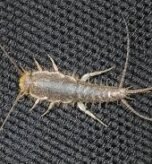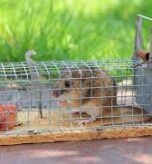Introduction:
Squirrels thrive in diverse ecosystems and show remarkable adaptability in their diet, making them true omnivores. They adjust their feeding habits based on seasonal resource availability and changing environmental conditions. This comprehensive guide examines what squirrels eat, how they forage, and how human interactions affect their nutrition and overall well-being.
The Core Components of a Squirrel’s Natural Diet
The foundation of a squirrel’s diet primarily revolves around plant-based resources, supplemented by animal matter to fulfil their nutritional requirements.
Nuts and Seeds: The Cornerstone of Nutrition
Acorns and nuts constitute a vital part of a squirrel’s diet, particularly during colder months. These foods are exceptionally dense in fats, proteins, and carbohydrates, providing the substantial energy necessary for maintaining body temperature and activity levels throughout winter. Beyond energy, nuts and acorns also supply essential vitamins and minerals crucial for immune function, bone health, and overall physiological operation.
Squirrels demonstrate sophisticated caching behaviour, typically burying individual nuts and seeds in dispersed locations, a practice known as scatter hoarding. This strategy reduces the risk of total food loss to predators or adverse environmental events. Their ability to recall these cache locations is vital for winter survival, although not all items are successfully retrieved. Conifer seeds, rich in fats and proteins, are also a significant food source, especially in coniferous forest ecosystems. Squirrels adeptly extract these seeds from cones, contributing to forest regeneration through their caching activities.
Supplementary Natural Foods
While nuts and seeds form the bulk of their diet, squirrels diversify their intake with a variety of other natural sources, depending on availability and environmental stress.
Tree Bark and Buds
When primary food sources become scarce or inaccessible, squirrels may resort to consuming tree bark and buds. The inner bark, or cambium, is the most nutritious part, offering starches and sugars, while buds provide concentrated nutrients, particularly from deciduous trees. This adaptation is crucial during severe winters, though the nutritional value is lower than that of nuts and seeds. Excessive bark stripping can, however, harm trees and the broader ecosystem, indicating environmental stress.
Fungi and Lichens
Fungi and lichens serve as essential supplementary food sources, especially when primary foods are limited. Ground-dwelling squirrels may unearth subterranean fungi, while tree squirrels might consume arboreal lichens. These organisms offer a dietary buffer during harsh conditions, providing vital nutrients to maintain health and energy levels.
Insects and Small Animals
Squirrels, despite their predominantly plant-based diet, are omnivores and will consume insects and even small animals as protein sources. Documented examples include caterpillars, crickets, grasshoppers, and other insect larvae. Remarkably, California ground squirrels have been observed actively hunting and consuming voles, indicating an opportunistic carnivorous behaviour, especially when prey is abundant. They also eat bird eggs and may resort to dissecting mice or moles when food is particularly scarce. Bones and deer antlers provide a source of calcium.
Fruits and Vegetables
During spring and summer, squirrels readily consume a variety of fruits and vegetables, including berries, apples, melons, grapes, and leafy greens. These provide essential nutrients and natural sugars, contributing to energy reserves.
Grains and Cereals
Squirrels also consume grains such as corn and wheat, or breakfast foods derived from them. However, the provision of breakfast cereals by humans is not advisable due to their high sugar content.
Seasonal Variations in Squirrel Diets
A squirrel’s diet adapts significantly throughout the year in response to seasonal availability.
Autumn: The Season of Abundance and Preparation
Autumn is a critical period for squirrels, as they actively feast and accumulate fat reserves through increased food consumption, a process known as hyperphagia. This season is dedicated to meticulously gathering and burying nuts and seeds, preparing substantial caches for the lean winter months.
Winter: Survival Through Resource Management
Unlike some other animals, squirrels do not truly hibernate; they remain active, albeit with reduced activity levels, throughout winter. Their survival hinges on accessing their stored food caches, which constitute their primary food source. Stored fat reserves, accumulated in autumn, are integral, serving as an energy buffer and providing insulation to maintain body temperature. When cached foods are depleted or inaccessible due to conditions like snow or frozen ground, squirrels resort to alternative sources such as tree bark, buds, fungi, and lichens. Opportunistic scavenging of discarded human food or animal remnants also becomes a crucial adaptive strategy during periods of severe scarcity.
Spring and Summer: Diversification and New Growth
In early spring, squirrels shift their diet to include swelling tree buds, flowers, and early-season seeds like maple and elm. As the seasons progress into summer, their diet diversifies further to include various fruits, berries, and a wider range of insects. It is not uncommon for squirrels to continue drawing from their winter caches even in summer, demonstrating their long-term resource management.
Human Impact on Squirrel Diets
Human presence, particularly in urban and suburban environments, significantly influences squirrel diets through the provision of supplemental food.
Supplemental Feeding: Benefits and Risks
While supplemental feeding can assist squirrel populations during extreme weather, it carries inherent risks. Urban squirrels often have access to a wider variety of human-generated food sources, including discarded items. Studies indicate that urban squirrels may exhibit less dietary seasonality and higher seed consumption due to year-round supplemental feeding, potentially leading to increased body weight in females and influencing population growth. However, this dependency can also lead to unbalanced nutritional content, potentially decreasing immunity and reproductive success. Furthermore, it encourages wildlife to associate humans with food, increasing the likelihood of disease transmission, injury, and mortality for both humans and animals.
Unhealthy Foods to Avoid
It is crucial to understand that not all human-provided foods are beneficial for squirrels. Processed, sugary, salty, or fried foods should be strictly avoided.
• Chocolate contains theobromine, which is toxic to squirrels, capable of causing heart problems, seizures, and even death.
• Candy and artificially sweetened products lead to dental issues and obesity.
• Salty and fried foods contribute to dehydration and kidney problems.
• White bread and other processed grains offer empty calories and can cause digestive upset.
• Dairy products are poorly digested by squirrels, often leading to diarrhoea and discomfort.
• Raw peanuts, particularly in large quantities, are detrimental. They are legumes, not true nuts, and can harbour poisonous mold linked to brain damage, seizures, and organ failure. They also contain a trypsin inhibitor that prevents the absorption of protein, B12, and other vital vitamins. Research suggests that frequent consumption of peanuts can lead to malnutrition, calcium deficiency, and metabolic bone diseases (MBD), and may even result in weaker bites. Cashews are also problematic as they can deplete calcium.
• Dried corn is low in essential amino acids and can lead to malnutrition or intestinal blockages if it becomes a primary food source.
• Other harmful items include onions, garlic, rhubarb leaves, and bitter almonds (which contain cyanide). Any food treated with pesticides or herbicides is also a definite risk.
For responsible feeding, it is best to offer raw, unsalted nuts such as almonds, hazelnuts, walnuts, pecans, and acorns. High-quality pelleted diets formulated for squirrels are also recommended.
Conclusion
The dietary strategies of squirrels reflect a remarkable capacity for adaptation to their dynamic environments. Their survival hinges on the meticulous caching of high-calorie foods like nuts and seeds, supplemented by a diverse array of natural resources such as tree bark, fungi, and insects. In urban settings, human provisioning of food introduces both opportunities and challenges, highlighting the need for responsible feeding practices to ensure the long-term health and viability of squirrel populations. Understanding these complex dietary dynamics is crucial for effective wildlife management and conservation efforts.



